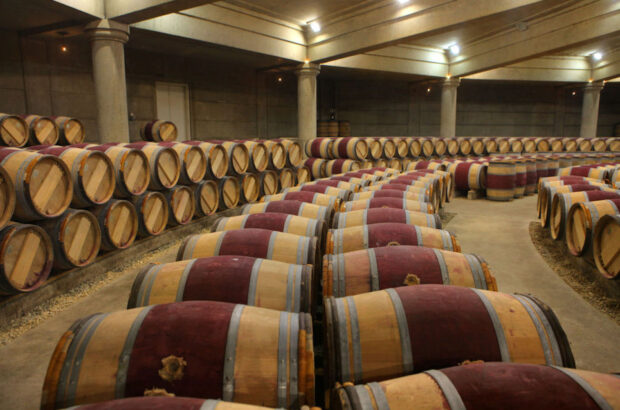Australia’s Langton’s Classification may not be as well known as Bordeaux's 1855 Classification, but it is an excellent barometer of how the Australian fine wine market is developing.
1855 and Langton’s Classification: Two approaches
We all know about the Bordeaux 1855 Classification. Based on the market price of the wines 160 years ago, it has remained a fixed five-tier ranking ever since – apart from a few tweaks including châteaux Pichon, Léoville and Batailley splitting into two or more estates, the two Pougets becoming one, Dubignon disappearing and most famously Mouton Rothschild’s promotion in 1973.
Langton’s, on the other hand, is a much more fluid ranking of Australia’s ‘best–performing’ fine wines.
In a similar way to St-Emilion’s classification, Langton’s is reviewed every five years and wines can be added, deleted, promoted or demoted. Started in 1990, it’s a three-tier system: Exceptional, Outstanding and Excellent.
Wines are eligible based on their demand, reputation, quality and track record at auction, and only considered for ranking after a minimum of 10 vintages.
The current ranking (the sixth) was published in 2014, and includes 139 wines – more than double the number in the 1855 Classification, but probably representing just 20% of the production volume.

Wines tasted in the Wine Australia/Langton’s Classification masterclass. Credit: Tina Gellie
Andrew Caillard MW, co-founder of Langton’s wine auctions and creator of the classification spoke about his ‘form guide’ during a masterclass at Australia House in London, charting the country’s 200 years of wine history through 12 of its top wines, ahead of an open tasting session of 60 more.
View Sarah Ahmed’s tasting notes for the top 40 wines in the Langton’s classification
Langton’s then and now
Of the 34 wines listed in the inaugural Langton’s Classification of 1990, Penfolds’ Grange was the only wine rated Exceptional and has remained at this rank ever since. In fact, no wine that has made it into the top tier has ever left.
‘It’s an iconic wine; a reference example,’ says Caillard, who says the story behind Grange – ‘of people like Max Schubert and Ray Beckwith and the beautiful Magill Estate vineyard’ – are as much a part of wine’s success as the liquid itself.
From Pewsey Vale’s Contours Riesling in Eden Valley, whose secondary petrolly notes Caillard prefers to describe as ‘the waxyness of a waterproof Driza-bone jacket’; to the distinctive Wilyabrup terroir (‘the Pauillac of Margaret River’) of Vasse Felix’s Heytesbury Cabernet Sauvignon; and Bass Philip’s Reserve Pinot Noir from Gippsland, likely from a Clos Vougeot clone brought into Australia in 1838 – facts, anecdotes and opinions pored forth non-stop from Caillard over the two-hour seminar.
Andrew Caillard MW quote, unquote:
- ‘Anything under AU$30 in Australia has to be sold under screwcap. I don’t think many young people would know how to use a corkscrew.’
- ‘Sincerely, I don’t like natural wine. But I love the people and I do like that they are challenging the status quo.’
- ‘Henschke’s 2010 Hill of Grace has got more 99 points than any other Australian wine: eight, from wine writers around the world tasting it blind. It’s seems a statistical impossibility!’
Caillard at first questioned whether it was arrogant of him to describe Langton’s as ‘the most famous New World wine classification’. He quickly decided it wasn’t – and it’s hard to disagree.
All 21 Exceptional wines in the Langton’s Classification
The Langton’s 2014 ranking includes 21 Exceptional wines (listed below), 53 Outstanding and 65 Excellent. Langton’s is owned by Australian retailer Woolworths.
- Penfolds, Bin 95 Grange Shiraz, South Australia; included since 1991
- Bass Phillip, Reserve Pinot Noir, South Gippsland, Victoria; included since 2005
- Brokenwood, Graveyard Vineyard Shiraz, Hunter Valley, New South Wales; included since 2010
- Chris Ringland, Dry-Grown Barossa Ranges Shiraz, Barossa Valley, South Australia; included since 2010
- Clarendon Hills, Astralis Syrah, McLaren Vale, South Australia; included since 2010
- Clonakilla, Shiraz-Viognier, Canberra District, New South Wales; included since 2010
- Cullen Wines, Diana Madeline Cabernet-Merlot, Margaret River, Western Australia; included since 2005
- Giaconda, Chardonnay, Beechworth, Victoria; included since 2005
- Grosset Wines, Polish Hill Riesling, Clare Valley, South Australia; included since 2010
- Henschke, Hill of Grace Shiraz, Eden Valley, South Australia; included since 1996
- Henschke, Mount Edelstone Shiraz, Eden Valley, South Australia; included since 2014
- Jim Barry Wines, The Armagh Shiraz, Clare Valley, South Australia; included since 2014
- Leeuwin Estate, Art Series Chardonnay, Margaret River, Western Australia; included since 2000
- Moss Wood, Cabernet Sauvignon, Margaret River, Western Australia; included since 2000
- Mount Mary Vineyard, Quintet Cabernet Blend, Yarra Valley, Victoria; included since 1996
- Penfolds, Bin 707 Cabernet Sauvignon, South Australia; included since 2000
- Rockford Wines, Basket Press Shiraz, Barossa Valley, South Australia; included since 2005
- Seppeltsfield, 100 Year Old Para Vintage Tawny, Barossa Valley, South Australia; included since 2014
- Torbreck, RunRig Shiraz, Barossa Valley, South Australia; included since 2010
- Wendouree, Shiraz, Clare Valley, South Australia; included since 2000
- Wynns Coonawarra Estate, John Riddoch Cabernet Sauvignon, Coonawarra, South Australia; included since 2014







